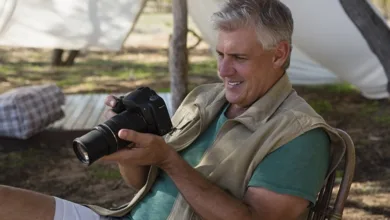Bygone Days of the TV Repairman

Before the era of internet streaming services, there lived the TV Repairman. He made house calls like the family doctor, armed with a valise full of tools to fix the television set. If ever he could not revive the “patient” in the home, there was always room for a broken TV in his truck.
In those early days of television, families bought furniture to last a lifetime. The typical television cabinet was a giant piece of furniture meant to blend in with matching Ethan Allen tables, chairs, and sofas. Like telephones, there might have been one TV per house, designated for the living room, where the whole family could gather. These television sets were massive, deep with tubes and circuitry — the opposite of today’s flat screens.
There wasn’t much programming to choose from. If you lived within driving distance to a large city, you might pick up two or three network channels and maybe one independent channel. NBC jumped from radio to television n 1932, followed by CBS in 1941 and ABC in 1948. Smaller cities often had only one VHF station available, frequently freezing the dials on Walter Cronkite’s newscast.
The news cycle was not “round-the-clock” in those days. Families read the morning newspapers, then heard the ensuing day’s news on the evening newscast. Hard “news” was carefully separated from “opinion.” To express emotion, Walter Cronkite simply removed his glasses — as he did when he announced the assassination of John F. Kennedy Jr. His sentiments were felt by viewers across the country.
TV shows were broadcast live and targeted at a family-friendly audience. Censorship controlled content, so anyone from age two to 100 could watch television without hearing a curse word or seeing bad behavior and excessive violence.
Even commercials were often broadcast live. Who can forget John Cameron Swayze, with his Timex watches? Variety shows and mysteries (many of which were sponsored by tobacco companies) were popular, and so were westerns. Some of the most beloved childhood heroes came from these programs: Roy Rogers, Hopalong Cassidy, and the Lone Ranger and Tonto. The Today Show was a pioneer in morning television, as was Late Night with Jack Paar and Steve Allen.
Black and white resolution gave way to color. Live performances became taped shows. Antennas evolved to cable, satellite, and streaming transmission. Segmented programming now offers more choices than anyone could watch in a lifetime. Factual news and opinion together have formed a kind of “news salad,” blurring the line between reality and digital variations of images. Journalistic standards used to be the broadcasting norm.
Now, not so much.
As televisions grew more affordable and functional, TV sets became more disposable. Although these changes have led to the disappearance of jobs for TV Repairmen, don’t feel sorry for these fellows.
As the electronics expert of his time, I like to think the TV Repairman started tinkering with computers in the ‘70s, quit smoking, and became a programmer in the ‘80s.
He is now retired, with a nice pension and a large flat screen.





